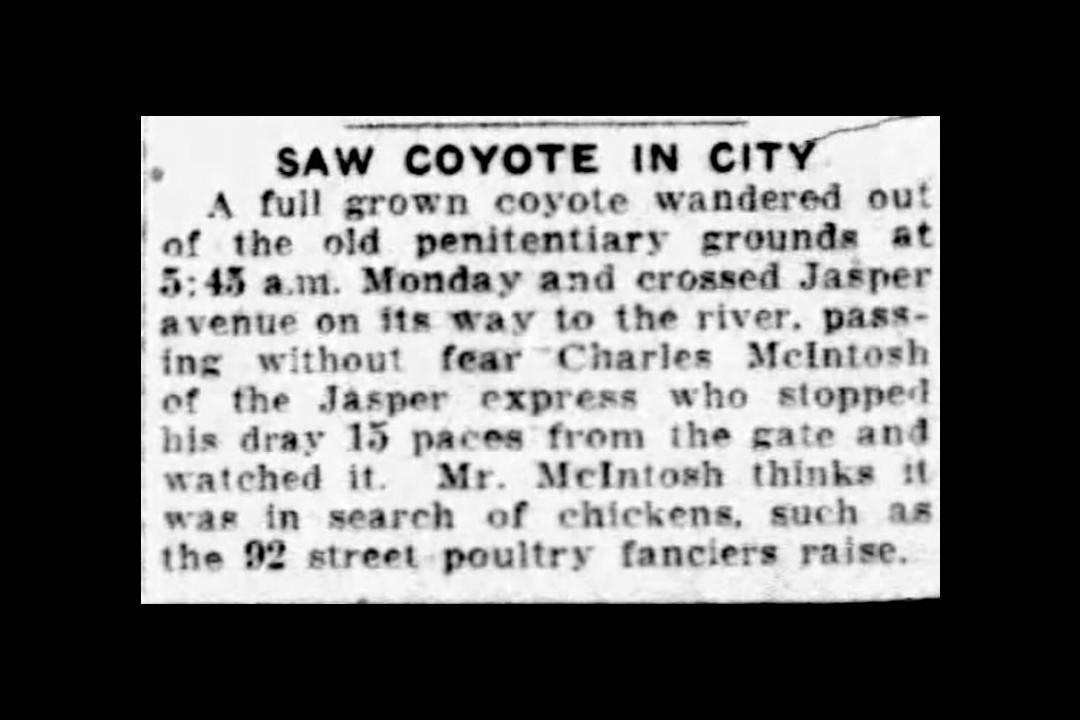On this day in 1926, a bold coyote was spotted crossing Jasper Avenue on its way to the river.
It certainly wasn't the first time a coyote and a person have crossed paths in these parts. The Indigenous people who first lived and gathered here called the animal mîscacâkanis in Cree and aapi'si in Blackfoot.
When European settlers arrived during the 1880s, few saw a distinction between coyotes and wolves. Most of their interest was in the fur trade; coyote and wolf pelts sold for the same amount (and were nowhere near as desired as beaver fur), so most European accounts at the time just made reference to small wolves or "prairie wolves."
The coyote's name comes from Central America, rooted in the Aztec word "cóyotl." That name eventually spread north, through the United States, and eventually entered the Alberta English lexicon. There's also a Latin name that will seem fitting for anyone who has heard a coyote's yelp — Canis latrans means "barking dog."
Coyotes were poorly regarded as Edmonton grew. They were considered nuisances and threats to livestock. Coyote and wolf populations began to decline around Edmonton and the rest of Alberta in the 1880s due to intentional poisoning, loss of habitat as more land was turned into farms, and difficulty finding prey like elk. Bounty systems, funded by homesteaders and town governments, would pay money in exchange for coyote ears. The bounties would continue for decades, finally being withdrawn in 1948.
In the 1950s, rabies was found in foxes in northern Alberta, which led to a cull of many wild animals — including coyotes. Millions of poisoned bait traps were set up over the next four years, killing an estimated 150,000 coyotes.
Despite more than a century of coyote control methods, they are still a common sight. Coyotes are famous for being clever and adaptable. And the efforts to eradicate wolves may have helped coyote populations increase and expand to new areas without competition. While they often feed on rabbits, mice, and other small animals, coyotes are opportunistic omnivores who will also eat fruit and other vegetation.
Edmonton's urban coyote population is growing, with estimates of up to 1,000 currently living in the city. Studies have also found that they are building their dens closer to human activity. The city is home to a coyote research project at the University of Alberta, which helps track coyote-human interactions.
While coyotes are generally pretty human-shy, they can threaten cats, dogs, and other small pets. There have also been recent concerns that coyotes associate human-heavy areas with easy meals, because people leave food out accidentally or on purpose.
This is based on a clipping found on Vintage Edmonton, a daily look at Edmonton's history from armchair archivist @revRecluse — follow @VintageEdmonton for daily ephemera via Twitter.

